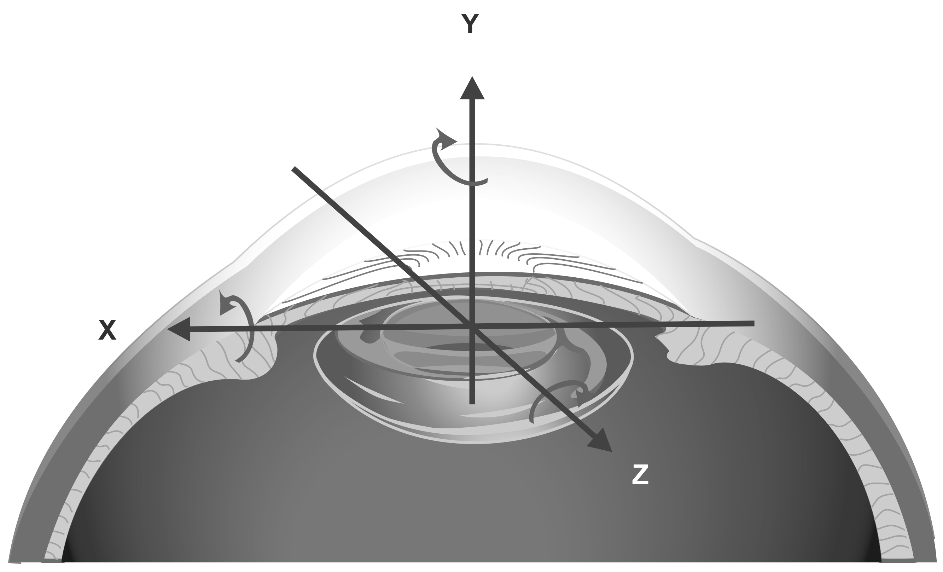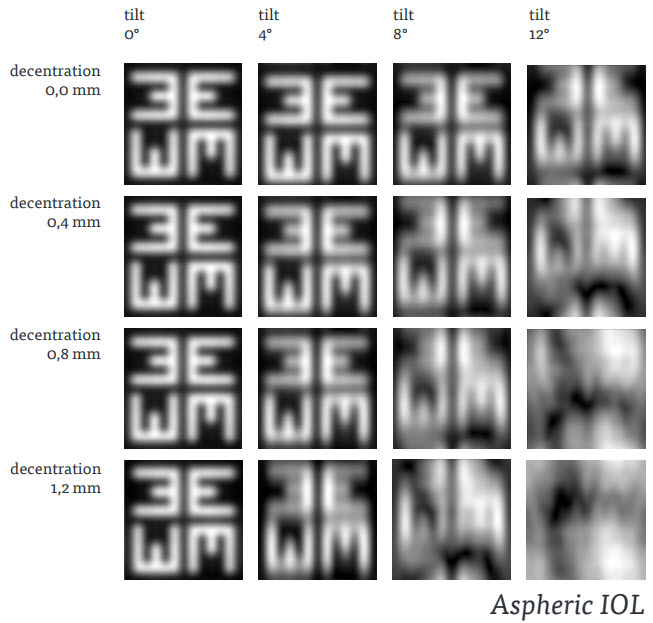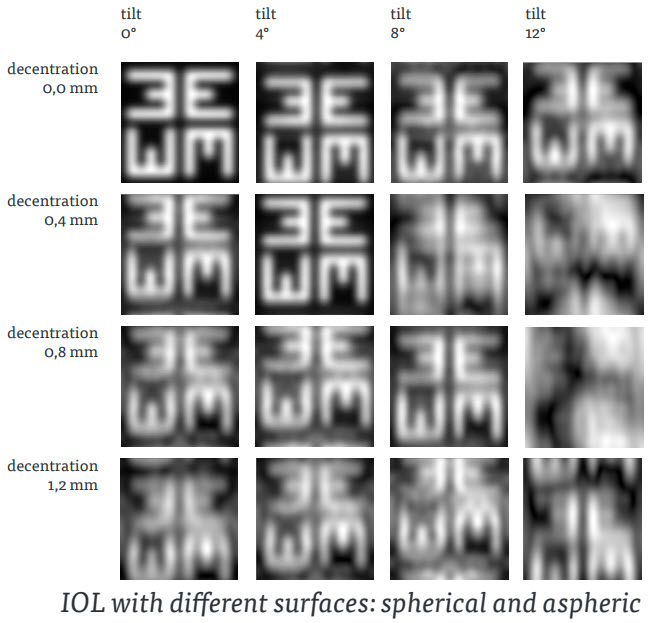
IOL Tilt and Decentration
In refractive cataract surgery, the primary goal is to restore patient's clear vision at distances that are important to them. Therefore, it significantly reduces or eliminates their dependence on glasses. Achieving optimal visual outcomes depends heavily on the precise placement and alignment of the intraocular lens (IOL). Regarding early post-op dislocations, we refer to IOL tilt and decentration, which can undermine the targeted visual acuity. These issues can lead to a range of visual disturbances, compromising the success of the surgery and patient satisfaction.
Early post-op dislocation has been underestimated for a long time but has gained more relevance with the rising interest in advanced IOL implantation. Advanced IOLs are more sensitive to positioning than monofocal IOLs due to their sophisticated design. IOL dislocation compromises the surgeon's ability to achieve emmetropia or the planned vision correction. In a Swedish study [1], planned and actual postoperative refractions were analyzed for 17,056 procedures, and authors reported that emmetropia was targeted in 78.1% of eyes and achieved in 52.7%

IOL tilt refers to the lens being positioned at an angle relative to the visual axis, while decentration occurs when the lens is not perfectly aligned with the center of the visual axis. Both conditions can induce significant optical aberrations, especially higher-order aberrations (HOAs) like coma and spherical aberrations. These aberrations distort the quality of the image formed on the retina, leading to decreased sharpness and contrast sensitivity. Even small misalignments can result in disappointing visual acuity for patients who expect perfect vision after refractive cataract surgery. To be precise, in the recent literature review conducted by Ashena Z. et al. [2], it is reported that a significant decrease in vision is possible with the value of decentration >0.5 mm. Therefore, advanced IOLs provide intended results only if positioned accurately.
IOL tilt and decentration can be managed by IOL repositioning in the early phase, which is much easier than correction of late IOL dislocation. Unfortunately, detecting and measuring IOL tilt and decentration to plan correcting measures can be challenging due to the limitations of existing technologies. In this regard, AkknaTek offers a solution, the Lens Reviewer as the innovative device allowing for rapid and accurate measurement of IOL position inside the eye.
Optical Simulation
The influence of IOL tilt and decentration on lens performance depends on lens design and might noticeably vary. The optical simulation could be used as one of the instruments to learn how specific IOLs respond to different values of dislocation. Undoubtedly, final IOL performance in the eye depends also on a patient’s comorbidities, which should also be considered when selecting IOL.
The figures below demonstrate simulated vision with the specified parameters of IOL tilt and decentration to illustrate their influence on the quality of vision. Two lens designs were compared. The obtained results are similar to the conclusion in the study performed by Holladay et al. [3]. It was demonstrated that clinically relevant dislocation manifests with the values of decentration starting from 0.4 mm and tilt of 8° or more. Tilt decreases the quality of vision more than decentration. Premium IOLs are more sensitive to dislocation than IOLs with spherical and aspheric designs. These observations are also in line with other recent studies.
One more approach to estimate IOL performance is to evaluate the image quality on the retina using MTF value and image simulation software. MTF (Modulation Transfer Function) shows how much image contrast is lost when a sinusoidal pattern goes through the lens. It also determines the point at which the details in the image can no longer be seen clearly.
Thus, the performance of three different IOLs was compared; the MTF at 100 lp/mm is represented by a color map:
- Red — perfect vision.
- Yellow — very good vision.
- Green — good vision.
- Blue — low vision (unacceptable resolution).

Spherical IOL: Acceptable performance for possible dislocations.
Spherical IOL provides only moderate performance and low contrast but is robust to dislocations.

Aspheric IOL: A large area of tolerance: a compromise between contrast and robustness.
Aberration-free IOL exhibits remarkable insensitivity to dislocations.

Aspheric IOL (Premium): IOL positioning is a limiting factor for performance.
Premium IOL performs well when centered but is more sensitive to tilt and decentration.
Summarizing the results of the simulation, a conventional IOL design might be more forgiving to tilt and decentration, but it does not deliver outstanding vision quality. In contrast, advanced IOLs offer high-quality vision, but any deviation from the ideal position could result in losing their benefits, highlighting the need for precision in IOL positioning.






